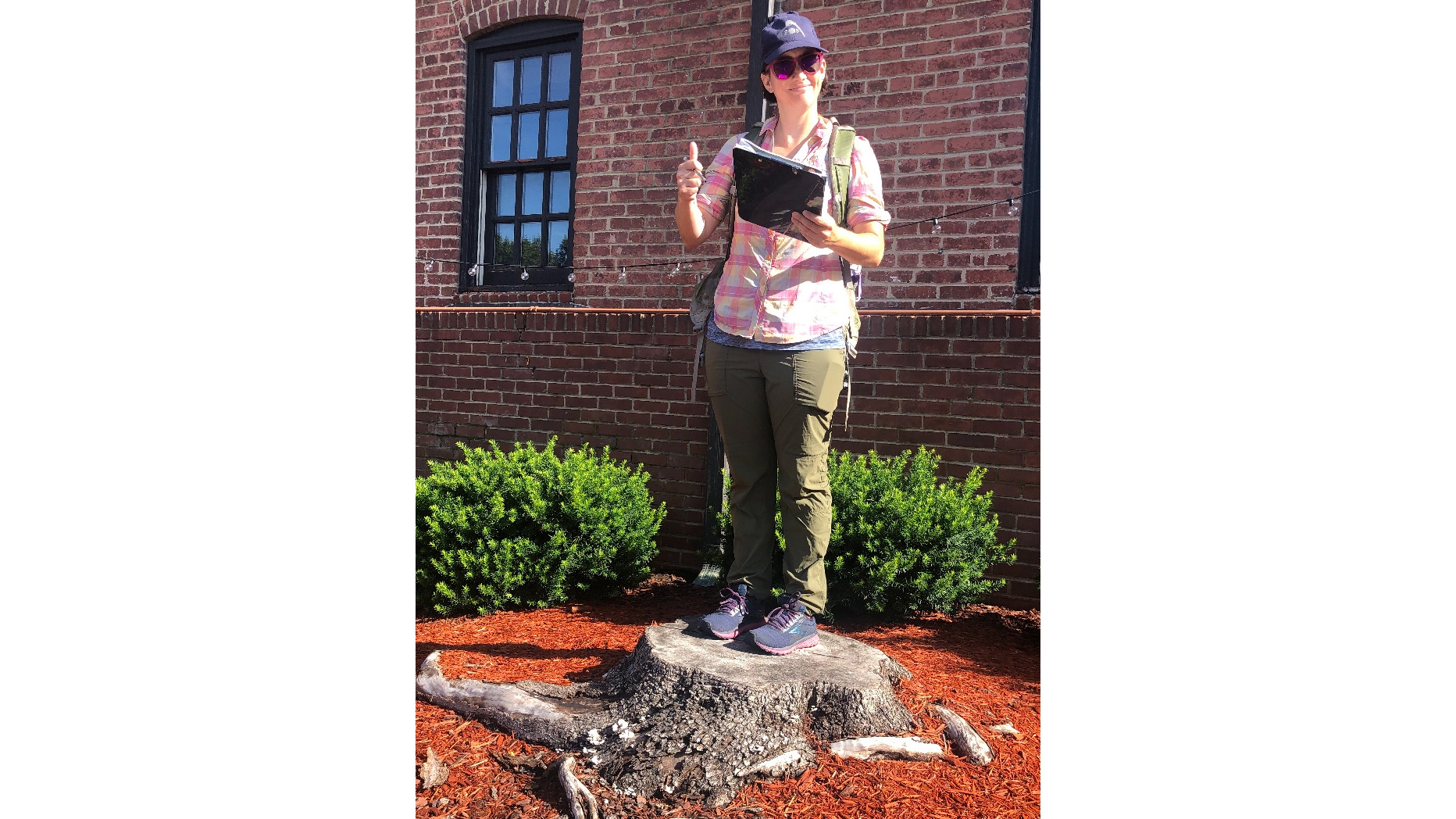Haoyi Shang | Urban Heritage Project

Haoyi's supervisor, Meg Frisbie, is using the arrow to record the location of the tree stump as part of the data collection process
Stuart Weitzman School of Design
102 Meyerson Hall
210 South 34th Street
Philadelphia, PA 19104

Haoyi's supervisor, Meg Frisbie, is using the arrow to record the location of the tree stump as part of the data collection process
This summer, I worked as a research assistant at the Urban Heritage Project at the University of Pennsylvania Weitzman School of Design. I worked on the C&O Canal project at Georgetown, Washington DC. The project aimed to develop a Cultural Landscape Report for the National Park Service.
The Chesapeake and Ohio Canal (abbreviated as C&O Canal) was an operational canal from 1831 to 1924 along the Potomac River between Washington, D.C. and Maryland. The canal was flooded several times and damaged severely in the 1920s and 30s. The government purchased the canal and restored it with the effort of the Civilian Conservation Corps. It became a national historical park in 1971.
During my time there, I was able to go to the site twice and conducted a detailed cultural landscape mapping. I got trained in various survey equipment and software for data collection. I also helped to draft and edit the chronology of the site based on dozens of research papers and books I read about the C&O canal. In addition, I did some online archival research and drafted short historic narratives about historic features on site. Our team pays close attention to CCC’s involvement in the canal restoration, so I also spent some time finding historic documents and photos that include CCC workers.
Many skills and resources I learned in preservation courses at Penn have proven to be useful during the internship. I used the archival research skills learned in HSPV 600, particularly map research skills. How to find and interpret the Sanborn maps is a crucial skill to learn for any archival research. Since I did not have an architectural background, taking field notes and doing drawings has always been quite difficult for me. But the project I did for HSPV 601 has prepared me to be able to take field notes and prepare field drawings on site. I am also grateful for what I learned from HSPV 5340 Public History of the Built Environment. This course helped me understand how public history was written and what types of historic information a public historian should be looking for. It helps me to locate the information I need more quickly and write the historic narratives more easily.
Through this project, I developed a deeper understanding of the cultural landscape. The cultural landscape was a relatively new concept to me before this internship. During the fieldwork, Molly Lester and Meg Frisbie—my supervisors and my colleagues from the Landscape program helped me to read the landscape and its connections with historic features more closely. I am also grateful to have this rare opportunity to go outside of Philadelphia and learn about the history of Washington D.C.